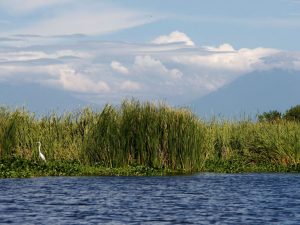Latin America has lost 59% of its wetlands over the last 50 years
On February 2 of each year, World Wetlands Day is celebrated, to remind humanity about the importance of these ecosystems, home to hundreds of wild species and millions of people around the world.
Weltands are “areas covered by water, natural or artificial, permanent or temporary, stagnant or flowing, sweet or salty”, and which are divided into three categories: marine and coastal, continental and artificial, according to the Convention Relating to Wetlands of International Importance, especially as Habitat for Waterfowl, known as the RAMSAR Convention, which in 2021 will celebrate 50 years of ensuring the protection of wetlands around the world.
Due to its importance, during these five decades of work, different countries of the world have come together to protect wetlands. Because of this, a list of Ramsar sites was created, which values the importance of these areas for life in general. According to the convention, “wetlands should be selected for the list based on their international importance in terms of ecology, botany, zoology, limnology or hydrology.”
Worldwide, inland and coastal wetlands cover more than 12.1 million square kilometers, although there are only about 2,200 Ramsar sites, constituting more than 2.1 million square kilometers. Latin America is home to some 206 Ramsar sites, with Bolivia being the country with the largest area of listed wetlands (148,000 km²). In total, there are 425 sites throughout the American continent.
Life in the wetlands of Central America

Wetlands are the source of a large number of ecosystem services, of enormous benefit to human populations. Photo: Jorge Rodríguez/Viatori
Mitigation and adaptability to climate change is possible if there is adequate and responsible management of the marine-coastal zones, particularly in an region as vulnerable to weather events as Central America.
“The increase in temperature in coastal areas, less rainfall and the increase in hurricanes due to climate change, can be managed if proper planning is given to wetlands,” said in 2017, Alejandro Jiménez, advisor to the International Union for Conservation of Nature (IUCN).
Francisco Rilla, scientific director of the Ramsar Convention, mentioned in an interview with the international media DW.com, that the region that has experienced the greatest reduction of wetlands in the last 50 years is Latin America and the Caribbean, with a decline of 59% of its surface. Some of the activities that have influenced the reduction of these ecosystems have been poorly planned urban development, as well as the increase in monocultures, which have a high impact on the soil and generate a change in water dynamics, which has a consequence direct on the vulnerability of countries to flood and hurricane scenarios.
“The conservation of wetlands is an option to adapt to extreme climates and stop poor territorial development that includes a high level of disasters in our countries,” added Jiménez. For his part, Rilla stressed that “wetlands contribute significantly to human well-being and are an important source of ecological services, including food, fresh water, protection against floods and coastal erosion, carbon storage, as well as services linked to tourism opportunities.”
The Punta Patiño wetland, in the Darién province, in Panama, Punta de Manabique in Izabal, Guatemala, the National Wildlife Refuge in Caño Negro, Costa Rica, the Guija Lake, in Metapán, El Salvador and the Archipelago of Solentiname in Nicaragua, are some of the areas that should be protected by the governments of the region, since, according to experts, they are areas of great importance, not only because of the enormous biodiversity they harbor, but also because of their protection potential. in the face of the growing number of disasters, caused by climate change that hit the populations of the isthmus.
